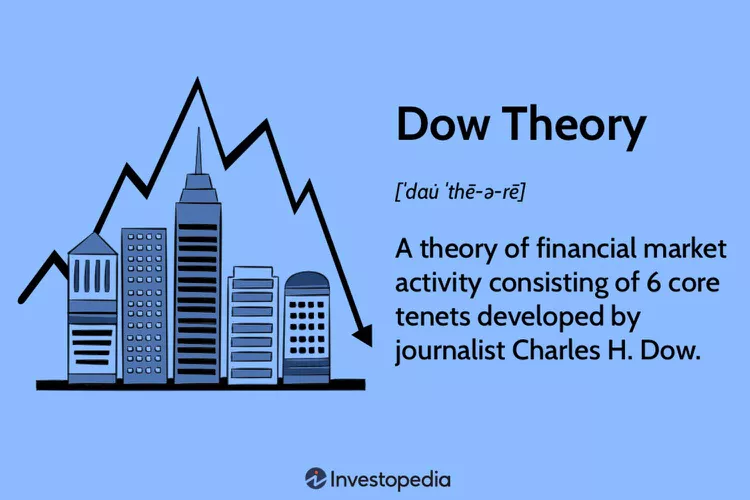The Dow Theory on stock price movement is a form of technical analysis. The theory was derived from 255 Wall Street Journal editorials written by Charles H. Dow (1851–1902), journalist, founder and first editor of The Wall Street Journal and co-founder of Dow Jones and Company. Following Dow’s death, William Peter Hamilton, Robert Rhea and E. George Schaefer organized and collectively represented Dow Theory, based on Dow’s editorials. Dow himself never used the term Dow Theory nor presented it as a trading system.

Dow Theory as summarized by Hamilton, Rhea, and Schaefer are described below.
1. The market has three movements
(1) The “main movement”, primary movement or major trend. It can be bullish or bearish.
(2) The “medium swing”, secondary reaction or intermediate reaction.
(3) The “short swing” or minor movement.
2. Market trends have three phases
Dow Theory asserts that major market trends are composed of three phases: an accumulation phase, a public participation (or absorption) phase, and a distribution phase. The accumulation phase (phase 1) is a period when investors “in the know” are actively buying (selling) stock against the general opinion of the market. During this phase, the stock price does not change much because these investors are in the minority demanding (absorbing) stock that the market at large is supplying (releasing). Eventually, the market catches on to these astute investors and a rapid price change occurs (phase 2). This occurs when trend followers and other technically oriented investors participate. This phase continues until rampant speculation occurs. At this point, the astute investors begin to distribute their holdings to the market (phase 3).
3. The stock market discounts all news
Stock prices quickly incorporate new information as soon as it becomes available. Once news is released, stock prices will change to reflect this new information.
4. Stock market averages must confirm each other
In Dow’s time, the US was a growing industrial power. The US had population centres but factories were scattered throughout the country. Factories had to ship their goods to market, usually by rail. Dow’s first stock averages were an index of industrial (manufacturing) companies and rail companies. To Dow, a bull market in industrials could not occur unless the railway average rallied as well, usually first. According to this logic, if manufacturers’ profits are rising, it follows that they are producing more. If they produce more, then they have to ship more goods to consumers.
Hence, if an investor is looking for signs of health in manufacturers, he or she should look at the performance of the companies that ship their output to market, the railroads. The two averages should be moving in the same direction. When the performances of the averages diverge, it is a warning that change is in the air. (think of the same when Nifty and Bank Nifty diverge, it is sign to be careful in trading on that particular day). Both Barron’s Magazine and the Wall Street Journal still publish the daily performance of the Dow Jones Transportation Average in chart form. The index contains major railroads, shipping companies, and air freight carriers in the US.
5. Trends exist until definitive signals prove that they have ended
Dow believed that trends existed despite “market noise”. Markets might temporarily move in the direction opposite to the trend, but they will soon resume the prior move. The trend should be given the benefit of the doubt during these reversals. Determining whether a reversal is the start of a new trend or a temporary movement in the current trend is not easy. Dow Theorists often disagree in this determination. Technical analysis tools attempt to clarify this but they can be interpreted differently by different investors.
